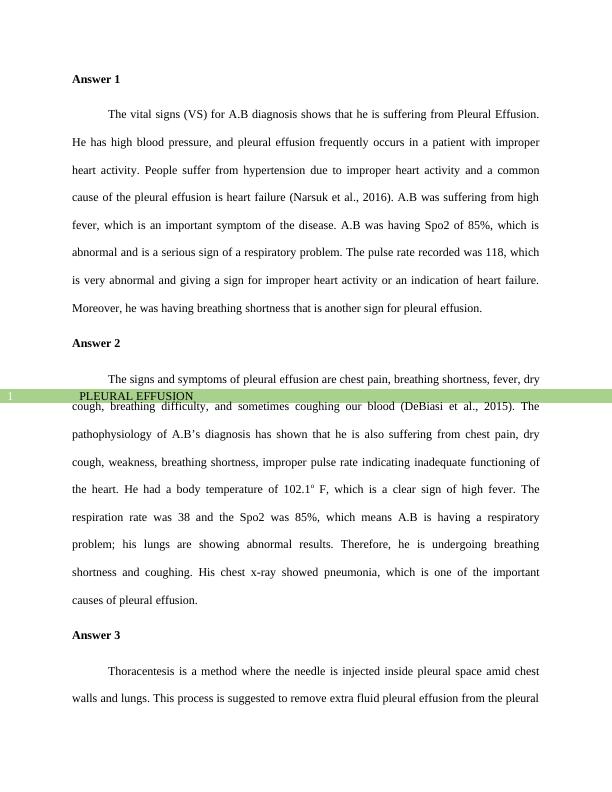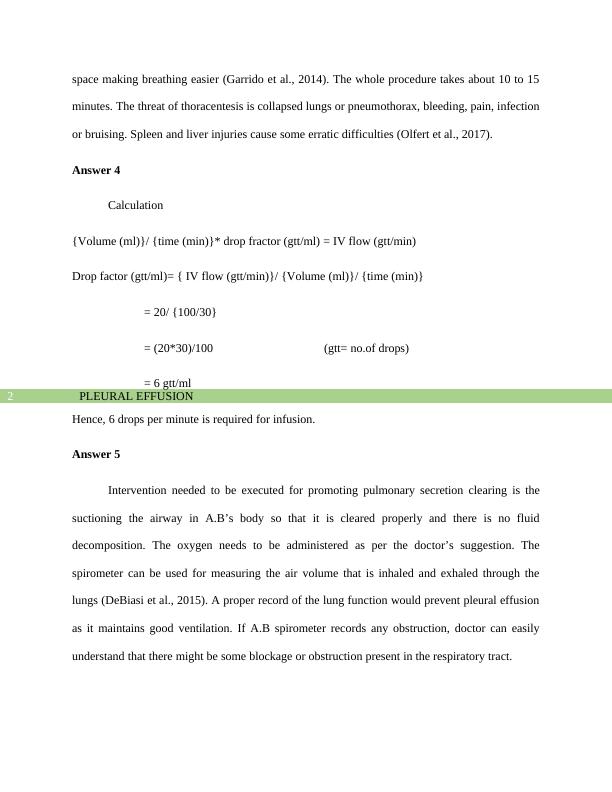Pleural Effusion Diagnosis
Given the diagnosis of pleural effusion, the admission vital signs of A.B. are discussed and the relationship between the underlying pathophysiology and the presenting signs and symptoms is explained. The procedure of thoracentesis is described, along with the calculation of the infusion rate for cefuroxime. Interventions to promote clearing of pulmonary secretions for A.B. are also discussed.
Added on 2022-08-18
Pleural Effusion Diagnosis
Given the diagnosis of pleural effusion, the admission vital signs of A.B. are discussed and the relationship between the underlying pathophysiology and the presenting signs and symptoms is explained. The procedure of thoracentesis is described, along with the calculation of the infusion rate for cefuroxime. Interventions to promote clearing of pulmonary secretions for A.B. are also discussed.
Added on 2022-08-18
End of preview
Want to access all the pages? Upload your documents or become a member.



